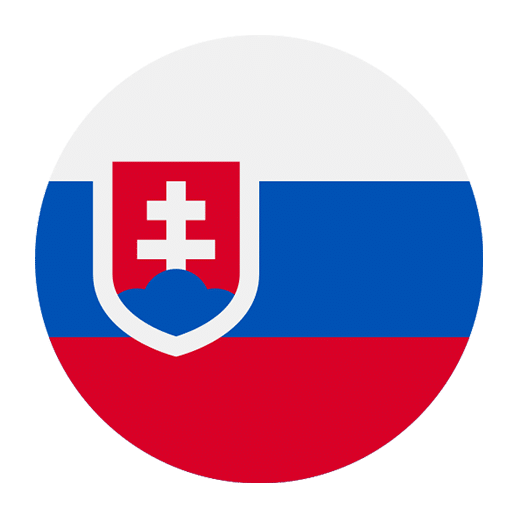Learning a new language is an exciting journey that opens up doors to understanding new cultures and connecting with people from different backgrounds. If you’re interested in Slovak, the official language of Slovakia, you’re in for a treat. Slovak is a member of the West Slavic group of languages and shares similarities with Czech and Polish. One of the first steps in any language learning process is mastering the basics of greeting and introducing yourself. This article will guide you through the most common Slovak words and phrases for these essential social interactions.
Basic Greetings
Greetings are the first words you’ll use when meeting someone, and knowing them can make a great first impression. Here are some common Slovak greetings:
Ahoj – Hello/Hi (informal): This is the most common informal greeting in Slovak, similar to saying “Hi” or “Hello” in English.
Dobrý deň – Good day: This is a more formal greeting used in various situations throughout the day. It is polite and can be used with people you do not know well.
Dobré ráno – Good morning: Use this greeting in the morning hours to say “Good morning” to someone.
Dobrý večer – Good evening: This phrase is used in the evening to greet someone.
Dobrú noc – Good night: This is a way to wish someone a good night before they go to bed.
Čau – Hi/Bye (informal): Similar to “Ahoj,” but can also be used to say “Bye.”
Zdravím – Greetings: A more neutral greeting that can be used in both informal and formal settings.
How to Respond to Greetings
Knowing how to respond to greetings is just as important as knowing how to greet someone. Here are some common responses:
Ahoj – Hello/Hi (in response): Simply repeat the greeting.
Dobrý deň – Good day: Repeat the greeting or say “Ahoj” if you prefer a more informal response.
Dobré ráno – Good morning: Repeat the greeting or say “Ahoj.”
Dobrý večer – Good evening: Repeat the greeting or say “Ahoj.”
Dobrú noc – Good night: Repeat the greeting or say “Ahoj.”
Čau – Hi/Bye: Repeat the greeting.
Zdravím – Greetings: Repeat the greeting.
Introducing Yourself
Once you’ve greeted someone, the next step is often to introduce yourself. Here are some common phrases to help you do that:
Volám sa… – My name is…: Use this phrase to tell someone your name. For example, “Volám sa John” means “My name is John.”
Som… – I am…: Another way to introduce yourself. For example, “Som John” means “I am John.”
Teší ma – Nice to meet you: Use this phrase after introducing yourself.
Odkiaľ si? – Where are you from?: This is a common question when meeting someone new.
Som z… – I am from…: Use this phrase to tell someone where you are from. For example, “Som z Ameriky” means “I am from America.”
How to Ask for Someone’s Name
When you meet someone new, you’ll often want to know their name. Here are some phrases to help you ask for someone’s name:
Ako sa voláš? – What is your name? (informal): Use this phrase when speaking to someone around your age or younger.
Ako sa voláte? – What is your name? (formal): Use this phrase when speaking to someone older or in a more formal setting.
Aké je vaše meno? – What is your name? (formal): Another formal way to ask for someone’s name.
Polite Phrases
Politeness is essential in any language, and Slovak is no exception. Here are some polite phrases you should know:
Prosím – Please: Use this word to make your requests more polite.
Ďakujem – Thank you: A simple yet essential word for expressing gratitude.
Nie je za čo – You’re welcome: Use this phrase in response to “Thank you.”
Prepáčte – Excuse me/Sorry: Use this word to apologize or to get someone’s attention.
Áno – Yes: A basic affirmation.
Nie – No: A basic negation.
Common Questions and Phrases
When getting to know someone, you’ll often ask and answer various questions. Here are some common questions and phrases:
Koľko máš rokov? – How old are you? (informal): Use this question to ask about someone’s age.
Koľko máte rokov? – How old are you? (formal): A more formal way to ask about someone’s age.
Čo robíš? – What do you do? (informal): Use this question to ask about someone’s occupation or activities.
Čo robíte? – What do you do? (formal): A more formal way to ask about someone’s occupation or activities.
Máte radi Slovensko? – Do you like Slovakia?: Use this question to ask someone about their opinion of Slovakia.
Áno, veľmi – Yes, very much: A positive response to the above question.
Nie, nie veľmi – No, not very much: A negative response to the above question.
Farewells
Knowing how to say goodbye is just as important as knowing how to greet someone. Here are some common ways to say farewell in Slovak:
Dovidenia – Goodbye: A formal way to say goodbye.
Čau – Bye: An informal way to say goodbye.
Ahoj – Bye: Another informal way to say goodbye.
Uvidíme sa – See you: Use this phrase to say “See you.”
Maj sa – Take care: A casual way to say goodbye.
Practice Makes Perfect
The key to mastering these greetings and introductions is practice. Try to use these phrases as often as possible in your daily interactions. Whether you’re speaking with a native Slovak speaker or practicing on your own, repetition will help you become more comfortable and confident with these essential words and phrases.
Role-Playing Scenarios
One effective way to practice is through role-playing scenarios. Here are a few examples to get you started:
1. **Meeting a Friend:**
– You: Ahoj!
– Friend: Ahoj!
– You: Volám sa [Your Name]. Teší ma.
– Friend: Volám sa [Friend’s Name]. Teší ma.
2. **Asking for Directions:**
– You: Dobrý deň. Odkiaľ ste?
– Stranger: Dobrý deň. Som z [City].
– You: Ďakujem! Majte sa dobre.
– Stranger: Nie je za čo. Dovidenia!
3. **At a Café:**
– You: Dobrý deň. Prosím, jedno kávy.
– Barista: Dobrý deň. Samozrejme. Čo ešte?
– You: To je všetko. Ďakujem.
– Barista: Nie je za čo. Majte sa.
Conclusion
Learning to greet and introduce yourself in Slovak is a foundational step in your language journey. These common words and phrases will help you navigate social interactions and make a positive impression. Remember to practice regularly, and don’t be afraid to make mistakes. Language learning is a gradual process, and every effort you make brings you one step closer to fluency.
By mastering these basics, you’ll be well on your way to deeper conversations and richer connections with Slovak speakers. So, go ahead and start practicing! Ahoj and dovidenia!

